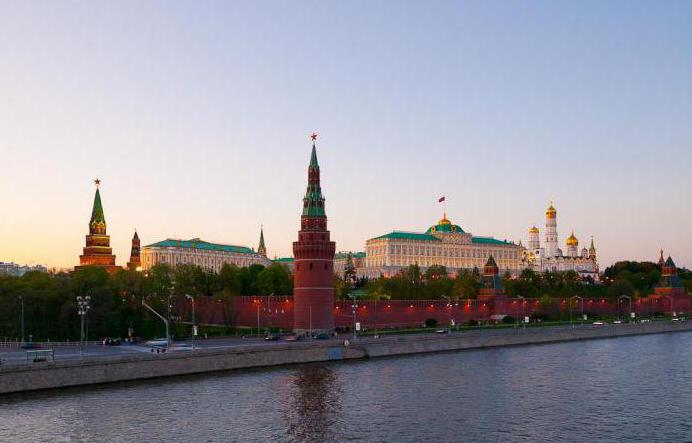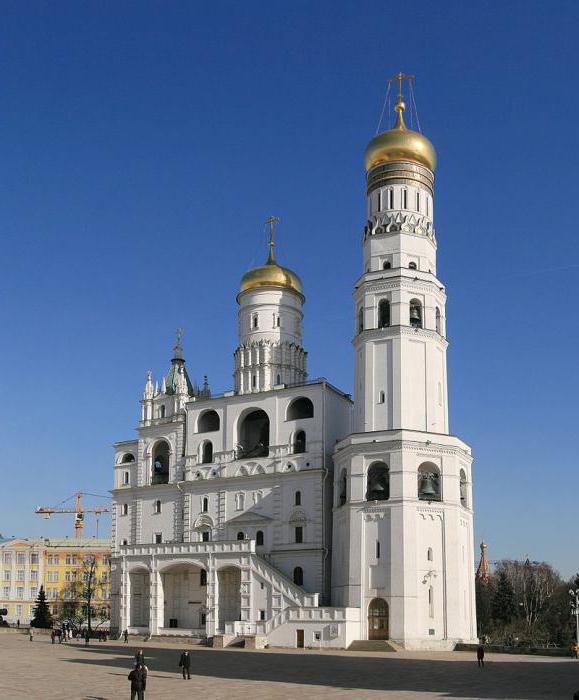The architectural monuments of Moscow and St. Petersburg are an important part of the world cultural heritage. Many objects are monuments of international importance. A variety of styles and trends have made many structures of domestic and foreign masters real masterpieces.
Kremlin
The cultural image of Moscow was formed over several centuries. The first annalistic mention of the city dates back to the 12th century. In the following centuries, under the princes of Moscow, the descendants of Ivan Kalita, the appearance of the Kremlin took shape, which, forming a single space with Red Square, is now perhaps the most famous monument of a cultural and historical nature. Its significance is determined by the fact that it is the oldest part of the modern capital. It is also important that it serves as a kind of chronicle of the city, while almost all other architectural monuments of Moscow were built later.
The Kremlin has the main temples, the palace, the Armory. But the square in front of it is of no less interest: after all, here is the State Historical Museum, a monument to Minin and Pozharsky. This complex is interesting not only from a culturological, but, above all, from a historical point of view, since almost all of its buildings are closely connected with the early history of the capital.
Museums
The architectural monuments of Moscow are the property of not only domestic, but also world culture. Museum buildings are also an object of keen interest not only for our compatriots, but also for foreign guests. The State Historical Museum is not only a repository of the most valuable exhibits, but also represents an interesting monument of the Neo-Byzantine style. The unusual, bizarre facade of bright brick color with white roofs undoubtedly makes this building unique and immediately recognizable.
Some architectural monuments of Moscow are interesting in that they were created on the initiative of private individuals. These include the world-famous Tretyakov Gallery. It was founded in the mid-19th century by the merchant Tretyakov, who was a philanthropist and industrialist and organized the construction of the future famous museum. An interesting fact is that the facade of the building was created according to the drawings of the famous artist Vasnetsov.
Theater
Moscow architectural monuments are popular and famous around the world. One of these buildings belongs to the Bolshoi Theater. It is interesting not only for being the largest opera and ballet center, but also for its building, which was designed in the 19th century by the architect Beauvais. However, the building itself was opened during the reign of Catherine II, but its final appearance was created after the Napoleonic army left the city. At that time, large-scale reconstruction work was undertaken, and the theater was also rebuilt as part of this project. The master remade it in the classical style and, according to his idea, arranged it in such a way that the structure was to symbolize the victory of the Russian army in World War II. The solemnity of the building was given by a strict rectangular square in front of it.
Churches
Moscow architectural monuments, photos of which are presented below, also include temples, which are real works of art. These include, first of all, the cathedrals in the Kremlin. They were built during the reign of Moscow princes. One of the oldest cathedrals is the Assumption Cathedral, which was erected during the time of the famous Russian Prince Ivan III.This cathedral is distinguished by its monolithic appearance and impressed contemporaries as a single solid stone. Other famous cathedrals on the territory of the Kremlin include Arkhangelsk (which served as the burial place of Moscow rulers) and the Annunciation churches built in the late XV and early XVI centuries. One of the most famous temples is the Ascension Church in the village of Kolomenskoye. It is interesting because it is built in a tent style, which was subsequently abandoned due to the fact that it did not comply with the Byzantine canons. This monument is unique in its style and therefore is included in the list of protected objects.
Value
So, the architectural monuments of the city of Moscow are an important part of domestic cultural significance. The construction of the city largely determined the appearance of the capital. Of particular importance in it were the churches, whence the name “Moscow Golden-domed” came from. In addition, the building and layout of the city has deep historical roots, and therefore it is interesting not only to culturologists, but also to historians and especially archaeologists, who regularly excavate and reconstruct buildings, posadas - the oldest buildings that have not reached us.
Architecture of St. Petersburg
The appearance of the Northern capital began to take shape during the reign of the first Russian emperor Peter I. It was he who set the tone for his West European-style development, which corresponded to his plan to turn his brainchild into a "window into Europe." He invited European masters to the construction, however, he created all the conditions for the training of domestic personnel in order to embody further architectural construction. Under him, the Peter and Paul Fortress was built with the eponymous cathedral, which became the tomb of Russian emperors. However, the final look of St. Petersburg took shape under Catherine II, during the reign of which came the peak of urban planning. Emperors of the XIX century also engaged in the arrangement of a new capital.

One of the most famous buildings is the Winter Palace, which became the residence of the rulers. It was built in the mid-18th century in the lush baroque style on the outside and with elements of elegant French Rococo inside. In the city, as well as in Moscow, famous temples were erected. One of them is the famous St. Isaac's Cathedral, the construction of which lasted forty years. Its author was O. Montferrand, and this cathedral is the largest Orthodox church in the Northern capital. Another famous temple of the city is the Kazan Cathedral. It is famous for its colonnade, which does not close, but emphasizes the beauty of the view of the square. So, the architectural appearance of the city was formed under the significant influence of Western European directions, but with a skillful combination of domestic achievements, while the architectural monuments of Moscow, the description of which was presented above, on the contrary, have deep historical roots.

